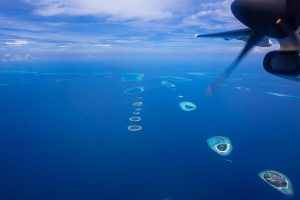Galápagos Islands: Responsible Tourism Supporting Conservation
The Galápagos Islands, a remote archipelago off the coast of Ecuador, have captured the hearts and minds of travelers for centuries. With its unique landscapes, diverse wildlife, and rich history, the islands offer a once-in-a-lifetime experience for those who visit. However, as tourism has increased over the years, so has the impact on this fragile ecosystem. In order to maintain the pristine beauty of the Galápagos, responsible tourism has become a crucial factor in the conservation efforts of the islands. Let us explore how responsible tourism is supporting conservation in the Galápagos Islands.
The Importance of the Galápagos Islands
The Galápagos Islands, located in the Pacific Ocean, are renowned for their isolation and unique biodiversity. This archipelago consists of 18 main islands, 3 smaller islands, and 107 rocks and islets that together form a UNESCO World Heritage Site. The islands are home to a diverse range of species, with almost 80% being endemic, meaning they are found nowhere else in the world. From giant tortoises and marine iguanas to blue-footed boobies and Galápagos penguins, the islands are a haven for wildlife enthusiasts and nature lovers.
Challenges of Tourism in the Galápagos Islands
Threat to Biodiversity
As tourism has increased in popularity, it has also brought about numerous negative impacts on the Galápagos Islands. One of these impacts is the threat to the unique biodiversity of the islands. With more tourists visiting, there is also an increase in the number of invasive species being introduced, which can have a devastating effect on the native flora and fauna. Additionally, activities like snorkeling and scuba diving can damage delicate coral reefs and disrupt marine life.
Pressure on Limited Resources
The Galápagos Islands are a fragile ecosystem with limited resources, and the ever-increasing number of tourists is putting immense pressure on these resources. From water scarcity to solid waste management, the islands are facing numerous challenges in providing for the needs of both the local communities and the tourists. This has a significant impact on the overall sustainability of the islands and its ability to support the unique biodiversity and fragile ecosystems.
The Role of Responsible Tourism
Responsible tourism, also known as sustainable tourism, is a way of traveling that prioritizes the preservation of the natural, cultural, and social environments of a destination. In the Galápagos Islands, responsible tourism plays a vital role in supporting conservation efforts by promoting sustainability and minimizing the negative impacts of tourism.
Education and Awareness
One of the key aspects of responsible tourism is educating and raising awareness among travelers about the fragile nature of the Galápagos Islands and the importance of preserving them. Tour guides, park rangers, and informational signs on the islands provide visitors with valuable insights into the local culture, history, and conservation efforts. This not only enhances the visitor experience but also encourages them to become more environmentally conscious and responsible travelers.
Small Group and Low Impact Tours
Another way responsible tourism is supporting conservation in the Galápagos is by promoting small group and low-impact tours. By limiting the number of visitors and activities in sensitive areas, these tours help minimize the negative impact on the environment. This also allows for a more intimate and authentic experience for visitors, making their trip to the Galápagos more meaningful and memorable.
Sustainable Practices
Responsible tourism also emphasizes the importance of sustainable practices in all aspects of tourism – from accommodations to transportation. Many lodges and tour companies in the Galápagos have adopted eco-friendly practices such as using renewable energy sources, conserving water, and reducing waste. This not only helps in preserving the environment but also benefits the local communities by creating jobs and supporting the local economy.
Conclusion
The Galápagos Islands are a true gem of the natural world, and responsible tourism is crucial in its preservation. By promoting sustainability, raising awareness, and implementing sustainable practices, responsible tourism is supporting conservation efforts in the Galápagos. As travelers, we must also do our part in protecting these unique islands by being responsible and mindful visitors. Let us all work together to ensure that the Galápagos remain a pristine and magical destination for generations to come.








